Encouraging reverence by children begins with the teaching of respect not only for each other, but also for animals, plants, and even inanimate objects. Another avenue to reverence is through awe and wonder, which children quite naturally experience and express. Another is reading about the lives of reverence heroes.
 Animals … and Their Families by Barbara Nascimbeni provides an up-close and personal look at nearly three dozen land, sea, and tree dwelling animals. Children's wonder will come alive looking at these creatures great and small.
Animals … and Their Families by Barbara Nascimbeni provides an up-close and personal look at nearly three dozen land, sea, and tree dwelling animals. Children's wonder will come alive looking at these creatures great and small.
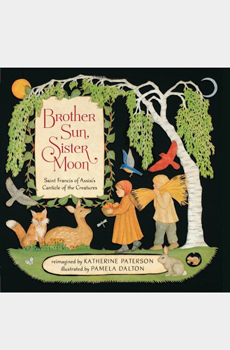 Brother Sun, Sister Moon: Saint Francis of Assisi's Canticle of the Creatures by Katherine Paterson models the way of gratitude and reverence for life. St. Francis, the patron of ecology, praises God as the gifted Artist who has given creation variety, beauty, and bounty.
Brother Sun, Sister Moon: Saint Francis of Assisi's Canticle of the Creatures by Katherine Paterson models the way of gratitude and reverence for life. St. Francis, the patron of ecology, praises God as the gifted Artist who has given creation variety, beauty, and bounty.
 Bully 101 by Dorettta Groenendyk describes bullies as selfish and power hungry boys and girls who feel compelled to demonstrate their superiority over others. What they need to develop are respect for others, empathy, and simple human kindness.
Bully 101 by Dorettta Groenendyk describes bullies as selfish and power hungry boys and girls who feel compelled to demonstrate their superiority over others. What they need to develop are respect for others, empathy, and simple human kindness.
 The Day the Crayons Quit by Drew Daywalt is a clever and creative story that teaches consideration and appreciation for inanimate objects. In this picture book, a box of crayons express their frustrations with the way things are and their particular roles.
The Day the Crayons Quit by Drew Daywalt is a clever and creative story that teaches consideration and appreciation for inanimate objects. In this picture book, a box of crayons express their frustrations with the way things are and their particular roles.
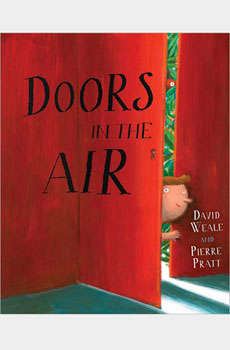 Doors in the Air by David Weale is an enchanting book about a little boy who through his imagination is able to see a world abounding in wonders.
Doors in the Air by David Weale is an enchanting book about a little boy who through his imagination is able to see a world abounding in wonders.
 Global Baby Girls by the Global Fund for Children serves as an antidote to the prejudice and gender-based hatred of females as second-class citizens and a burden to society. The book consists of photographs of the faces of girl babies from around the world.
Global Baby Girls by the Global Fund for Children serves as an antidote to the prejudice and gender-based hatred of females as second-class citizens and a burden to society. The book consists of photographs of the faces of girl babies from around the world.
 Here Come the Humpbacks! by April Pulley Sayre is a joyous children's picture book that marvels at the mysteries of these magnificent whales.
Here Come the Humpbacks! by April Pulley Sayre is a joyous children's picture book that marvels at the mysteries of these magnificent whales.
 How Things Work in the Yard by Lisa Campbell Ernst exposes children to the many exotic learning experiences they can have in their own yards with things, plants, and animals.
How Things Work in the Yard by Lisa Campbell Ernst exposes children to the many exotic learning experiences they can have in their own yards with things, plants, and animals.
 I Wish I Had… by Giovanna Zoboli salutes animal wisdom, skills, and powers. Beautiful images of a blackbird, tiger, wild good, mouse, dog, bear, elephant, among others, lead into an exercise for developing respect. For example, "I wish I had the eyes of a blackbird to see every blade of grass in the meadow."
I Wish I Had… by Giovanna Zoboli salutes animal wisdom, skills, and powers. Beautiful images of a blackbird, tiger, wild good, mouse, dog, bear, elephant, among others, lead into an exercise for developing respect. For example, "I wish I had the eyes of a blackbird to see every blade of grass in the meadow."
 In God's Name by Sandy Eisenberg Sasso makes the point God likes being revered by different names as a result of the diversity of beliefs among people. It is not necessary to choose among them.
In God's Name by Sandy Eisenberg Sasso makes the point God likes being revered by different names as a result of the diversity of beliefs among people. It is not necessary to choose among them.
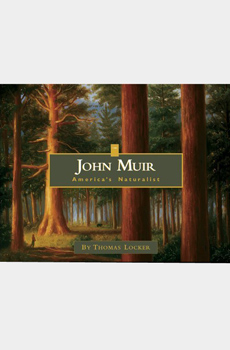 John Muir: America's Naturalist by Thomas Locker vividly conveys this environmentalist's love of the wildness in wilderness and his unstinting work to set up a national parks system.
John Muir: America's Naturalist by Thomas Locker vividly conveys this environmentalist's love of the wildness in wilderness and his unstinting work to set up a national parks system.
 Lazy Daisy, Cranky Frankie by Mary Ellen Jordan demonstrates why it is good to learn early to respect the mysteries of animals: the more we try to control them, the more they rebel.
Lazy Daisy, Cranky Frankie by Mary Ellen Jordan demonstrates why it is good to learn early to respect the mysteries of animals: the more we try to control them, the more they rebel.
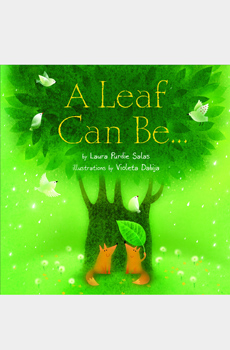 A Leaf Can Be by Laura Purdie Salas is an earth-cherishing book that proclaims the many things leaves on a tree can be and do, along with the connections they have with other elements of the natural world.
A Leaf Can Be by Laura Purdie Salas is an earth-cherishing book that proclaims the many things leaves on a tree can be and do, along with the connections they have with other elements of the natural world.
 Little Penguin: The Emperor of Antarctica by Jonathan London follows the journey of Emperor penguins from birth to maturity. It gives us many reasons to respect these animals and others like them.
Little Penguin: The Emperor of Antarctica by Jonathan London follows the journey of Emperor penguins from birth to maturity. It gives us many reasons to respect these animals and others like them.
 Namaste! by Diana Cohn focuses on a young girl in Tibet who greets those she meets during the day with the "Namaste" blessings. It means "the light in me meets the light in you" and is a beautiful reverence gesture.
Namaste! by Diana Cohn focuses on a young girl in Tibet who greets those she meets during the day with the "Namaste" blessings. It means "the light in me meets the light in you" and is a beautiful reverence gesture.
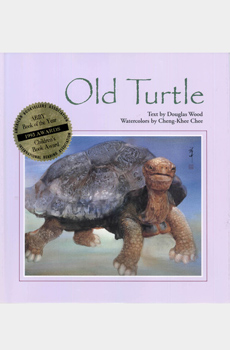 Old Turtle by Douglas Wood is a children's book classic that celebrates the sacredness of life and the glory of God evident throughout creation.
Old Turtle by Douglas Wood is a children's book classic that celebrates the sacredness of life and the glory of God evident throughout creation.
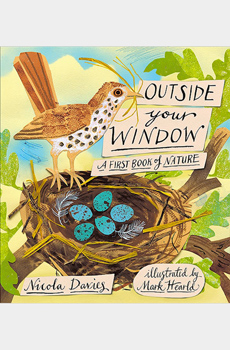 Outside Your Window: The First Book of Nature by Nicola Davies is a stunning children's book pointing out the wonders and miracles taking place during each of the four seasons.
Outside Your Window: The First Book of Nature by Nicola Davies is a stunning children's book pointing out the wonders and miracles taking place during each of the four seasons.
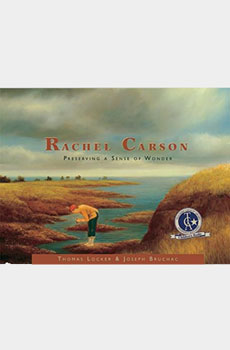 Rachel Carson: Preserving a Sense of Wonder by Joseph Bruchac and Thomas Locker will inspire children with the life story of an environmental hero. Her wonder and love of nature led her to write books insisting that we must change our ways to save the planet.
Rachel Carson: Preserving a Sense of Wonder by Joseph Bruchac and Thomas Locker will inspire children with the life story of an environmental hero. Her wonder and love of nature led her to write books insisting that we must change our ways to save the planet.
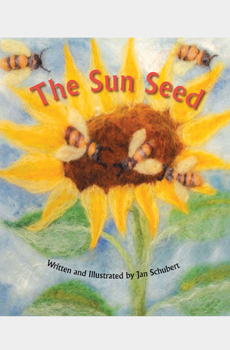 The Sun Seed by Jan Schubert beautifully illustrates how Mother Earth nurtures a plant from seed to flower and back to seed again. It provides a good way to teach children about the wonders of plant life.
The Sun Seed by Jan Schubert beautifully illustrates how Mother Earth nurtures a plant from seed to flower and back to seed again. It provides a good way to teach children about the wonders of plant life.
 Walking with Henry: Based on the Life and Works of Henry David Thoreau by Thomas Locker uses beautiful landscape paintings to reflect the famous American writer's reverence for the natural world.
Walking with Henry: Based on the Life and Works of Henry David Thoreau by Thomas Locker uses beautiful landscape paintings to reflect the famous American writer's reverence for the natural world.
 Wangari's Trees of Peace by Jeanette Winter is an inspiring biography of Wangari Maathai, the African winner of the Nobel Peace Prize for her restorative work on the environment.
Wangari's Trees of Peace by Jeanette Winter is an inspiring biography of Wangari Maathai, the African winner of the Nobel Peace Prize for her restorative work on the environment.
 Wild Animals by Eduardo Bustos is filled with lyrical and positive portraits of exotic wild animals. It models respect for those animals we might find both scary and odd.
Wild Animals by Eduardo Bustos is filled with lyrical and positive portraits of exotic wild animals. It models respect for those animals we might find both scary and odd.
